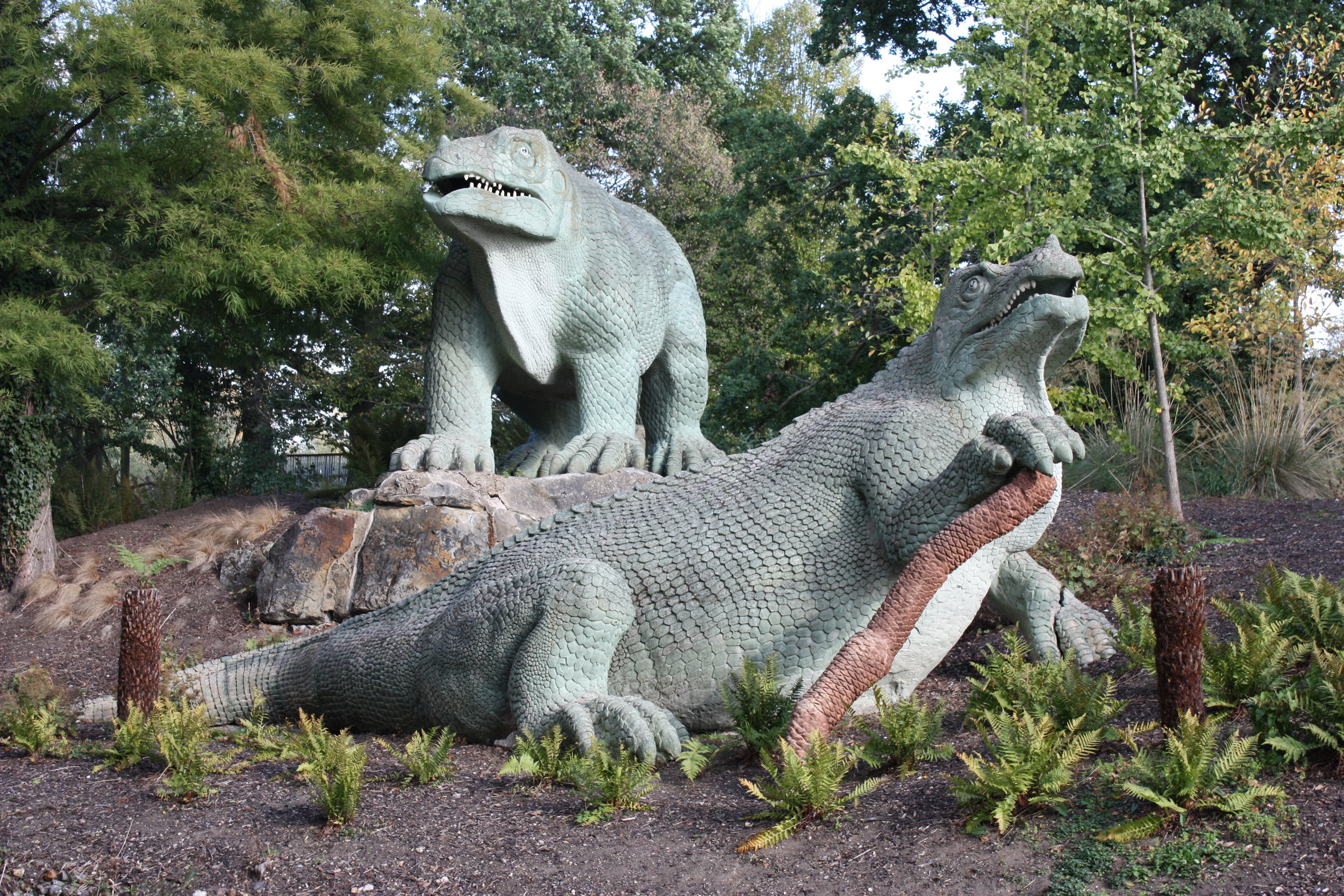The Crystal Palace dinosaurs have become a fast favourite for family days out in South London. Located in Crystal Palace Park, the models are fascinating for children and adults alike and as it is free to visit, the exhibition attracts the crowds. They represent fifteen genera of extinct animals from many geological ages, such as the Mesozoic era and Cenozoic era. But how and why did these models come to be? Well, we’re glad you asked. Although the story of the actual dinosaurs began millions of years ago, the story of these particular models begins over 150 years ago, six years prior to Darwin’s Theory of Evolution...
Crystal Palace Park came to exist after Joseph Paxton’s Crystal Palace was bought and moved to Penge Place from Hyde Park in 1851. After extensive renovation, a public park was created in the grounds that surround the Crystal Palace.
Sculptor and natural history artist Benjamin Waterhouse Hawkins was commissioned in 1852 to create life-sized models of extinct animals, which became the Crystal Palace dinosaurs. He undertook the challenge to attempt to project paleontological discoveries as full-scale animals, creating the first dinosaur sculptures in the world. This section of Crystal Palace park was constructed between 1853 and 1855 and has not been altered much since this time.
Waterhouse worked with expert palaeontologist, Richard Owen, to produce these sculptures and built the models in his workshop on site at the park. The project involved both physical and intellectual dexterity as fossils had to be examined, scientific literature studied and then transformed into sculptures. Three islands were created to represent each geological era: the Paleozoic era, Mosozoic era and the Cenozoic era. The water levels in the lake were also designed to rise and fall to make the models more realistic.
Benjamin Waterhouse-Hawkins
Waterhouse held a dinner inside the mould of one of the Iguanodon models on New Year’s Eve 1853 to celebrate the launch and the dinosaurs inspired a strong reaction from the public. Crystal Palace Park opened in June 1854. Despite the great success and Waterhouse beginning to sculpt a life-sized mammoth in 1855, directors of Crystal Palace Company told Waterhouse to stop production. Building the models had been costly, totalling at around £13,729, and funding was cut.
The hype surrounding the Crystal Palace Dinosaurs soon petered out, as palaeontological progress rendered them less scientifically accurate and the subject of scorn from many palaeontologists. The park and the models were neglected and the Crystal Palace fire of 1936 only made matters worse. The models were concealed by overgrown foliage and generally ignored up until 1952, when Victor H.C. Martin carried out a restoration of the sculptures. The models were classed as Grade II listed buildings from 1973.
The sculptures were fully restored to their former glory in 2002. Destroyed limestone was replaced, fibreglass replacements were made and the models were recast. Consequently, the models were upgraded to Grade I listed in 2007. Although they are now scientifically outdated and palaeontology has moved on, they are still very impressive and worth a visit.
WHAT IS THE SOUTH LONDON CLUB CARD?
The South London Club is a local discount card to help support small independent businesses across South London whilst saving all who live, work & play in South London money! With over 500+ local discounts to choose from, you will discover & explore all the best hidden gems in South London. Join over 5,000 of us & celebrate all that's independent & South London!




